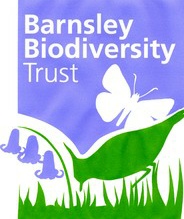


Key features of neutral grassland for wildlife species
Neutral Grassland is found on shale soils or alluvial deposits in Barnsley and sustaining an ‘unimproved nature’ is important for a range of plants which cannot tolerate competition from the more vigorous grass species associated with agriculturally improved grasslands.
Managing sites by wide scale frequent mowing or intensive periods of grazing over the whole site will be unsuitable for many species.
Species supported by grassland
Birds
Neutral grasslands support farmland birds such as Lapwing, Grey Partridge, Skylark, Yellow Hammer, Linnet and other finches, as well as Starling, Kestrel and Barn owl.
Mammals
Voles, mice, shrews, Brown Hare, Hedgehog, Mole
Reptiles / Amphibians Grass Snake, newts,
Invertebrates
A wide range of invertebrates including solitary bees and wasps, bumblebees, butterflies, moths, and grasshoppers.
Butterflies include Meadow Brown, Ringlet, Common Blue, Small Heath.
Moths: Chimney Sweeper feeding on Pignut
Plants
Neutral grassland can have a rich array of flowering plants:
Common Knapweed, Ox-Eye Daisy, Hawkbits, Cat’s Ear, Dandelion, Meadow Buttercup, SelfHeal, Lady’s bedstraw, Red Clover, vetches and Yellow Rattle stand out in a colourful mix.
Great Burnet, Adder’s Tongue Fern, Ribwort plaintain, and Common Sorrel add interest. + Birds Foot Trefoil, , Cowslip..
A rich variety of grasses can be found in Neutral Grassland including Sweet Vernal Grass, Crested Dog’s-Tail, Red Fescue, Common Bent, and Yorkshire Fog with occasional Quaking Grass, Smooth Meadow-Grass, Yellow Oat-Grass and Cat’s Tail.
The presence of flowers for nectar and pollen, and plants for food and shelter throughout the spring and summer, are critical to a number of invertebrate and other species, some of which are dependent on specific plant species at times of their life cycle.
Different species require widely different types of grass length - sward structure - and no single type is beneficial for all.
Longer swards with copious invertebrates and seeds support a more numerous and varied small mammal and bird population, including sparrows and finches, feeding on them.
Open and short swards, often only a few centimetres high, are favoured by birds like Lapwing, Starling and thrushes and mammals such as Hedgehog, feeding on soil invertebrates.
Adjacent areas such as hedgerows, scrub and woodland support species requiring places to nest and roost as well as feed, for example Yellow Hammer.
